Essays
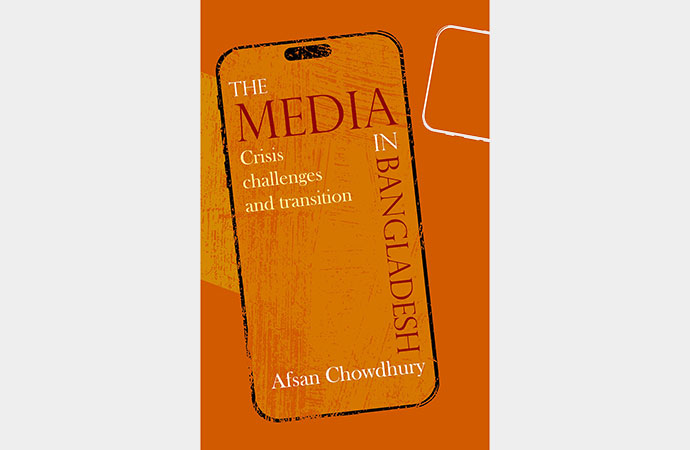
Afsan Chowdhury's The Media in Bangladesh: Crisis, Challenges and Transition is a complex, nuanced and deeply informed exploration of the evolving media landscape in Bangladesh. Blending autobiographical reflection with academic analysis and political economy critique, this book is more than a simple journalistic memoir or media survey. It is a long-view, multi-decade reflection on the role, transformation and contradictions of Bangladeshi media in a country marked by authoritarian legacies, crony capitalism, rapid digitalization and an ever-volatile public sphere.
The book is structured around his own writings from 2014 to 2023, with added retrospective commentary and context. What emerges is a sweeping, often sobering diagnosis of a media industry simultaneously bursting with life and riddled with structural ailments. From his vantage point as a veteran journalist and cultural commentator, the writer crafts a unique narrative that is both personal and political, analytical and anecdotal.
Framing the Media Landscape
From the outset, the writer emphasizes the duality of media in Bangladesh. On one hand, technological growth and increasing media outlets (newspapers, TV, online portals, social media) signal a booming information sector. On the other hand, ethical standards, investigative rigor and editorial independence have often stagnated or declined. This contrast - between quantitative growth and qualitative erosion - is a core concern.
The writer's core argument is that the media must be analysed within the framework of network capitalism and class dynamics. Media is not merely a tool for communication or a public good; it is, more crucially, a site of power - a vehicle for gaining social capital, legitimacy and economic advantage. This reframing is critical to understanding why media owners continue to invest in unprofitable outlets: not for monetary return, but for access, prestige and political leverage.
Structure and Ownership - Media as an Economic Instrument
The first thematic cluster in the book interrogates the relationship between media structures and the broader economy. The writer traces media's shift from a revolutionary political tool in East Pakistan to a vehicle for legitimacy in the post-independence state. Post-1971, the media became aligned with power structures rather than resisting them.
The writer paints a picture of media outlets that are deeply entangled in a crony capitalist order, where ownership often reflects class interests rather than journalistic or public service missions.
He critiques the idea of independent journalism in an economy where media survival depends on patronage from political elites or business tycoons. In this view, editors and senior journalists are not independent actors but embedded agents who often serve the interests of their paymasters. The media, instead of checking power, becomes another node in the elite power network.
This section also critiques the romanticized notion of the editor as a public intellectual or democratic crusader. In contemporary Bangladesh, the editor's role is complex and often compromised - a mixture of arbitrator, censor, advocate and actor in political theater. The writer compellingly tracks this transformation and the blurred lines between editorial leadership and political allegiance.
Censorship - Legal, Institutional and Social
One of the strongest sections of the book is Writer's detailed analysis of censorship in Bangladesh. He challenges the conventional idea that censorship is purely a government function. Instead, censorship is multi-layered and institutionalized:
• Internal newsroom censorship, driven by owners and editors.
• Legal censorship, via laws like the ICT Act (Section 57) and the Digital Security Act (DSA).
• Social censorship, where audiences act as censors, pressuring media to conform to majoritarian or nationalist narratives.
• Self-censorship, practiced by journalists fearing legal, professional, or physical repercussions.
The writer is particularly critical of how vague laws - ostensibly enacted to fight cybercrime or hate speech - have been deployed against journalists, writers and dissidents. The DSA, in his view, is less a digital governance tool and more a bludgeon used against dissent. He provocatively likens the DSA to "a mad dog that can bite anyone," underscoring its arbitrariness and danger. However, the expat media (e.g., Kanak Sarwar, Iliyas, Pinaki Bhattacharya) operate from abroad, beyond the state's legal reach. Social media democratized news dissemination, reducing traditional media's monopoly. The DSA is ineffective here, leading to state frustration.
This section is not just a legal critique but a broader reflection on freedom, surveillance and fear. It maps the climate of caution that pervades Bangladeshi journalism today - a climate in which bold, investigative work is rare and survival often means silence or complicity.
Pandemic, Populism and the Future
The COVID-19 pandemic is presented as both a stress test and a turning point for the media. The writer critiques how fear-based coverage, overreliance on experts and lack of scientific literacy led to misinformation and panic. He notes that the pandemic accelerated a move toward personalized, social media-based news consumption, deepening the crisis of traditional outlets.
He reflected somewhat philosophical note - questioning whether true media freedom is possible in a system dominated by networked authoritarianism and crony capitalism. For the writer, the answer is not a simple "yes" or "no" but a call for realism. Media, like all institutions, reflects its environment. It cannot be insulated from politics, class, or economics.
The Digital Media Revolution - Democratization or Decline?
The writer devotes considerable space to analyzing how digital media and social platforms have revolutionized the Bangladeshi media scene. He sees this as a double-edged sword.
On one hand, social media has democratized communication. It has allowed new voices - vloggers, diaspora activists, independent content creators - to challenge the dominance of mainstream media. Platforms like Facebook and YouTube are now central to political discourse, public mobilization and even alternative journalism.
On the other hand, the quality and sustainability of digital media remain questionable. The writer coins the term "views media" to describe the opinion-heavy, often fact-light content that now dominates the digital space. Talk shows, vlogs and reaction videos generate clicks and clout, but often at the expense of journalistic rigor.
The book also provides a compelling and timely analysis of how the political landscape in Bangladesh is undergoing a profound transformation due to the rise of social media. It argues that political influence and discourse are increasingly shifting from traditional spaces-like public rallies and mainstream media platforms-to digital ones, particularly Facebook and YouTube. The author presents this shift not merely as a trend, but as a structural change in how political power is articulated, negotiated and contested.
At the outset, the writer introduces the idea that two parallel political spaces now coexist: one belonging to traditional politicians and another to social media personalities. These spaces sometimes intersect, but the distinction is clear-social media figures now compete with and in some cases eclipse, the influence of career politicians. The suggestion that professional politicians are "not necessarily winning" sets the tone for the broader argument: that power is increasingly platform-based rather than party-based.
The discussion then turns to how even mainstream professional media now derive their power from digital visibility. Traditional TV and newspapers are no longer dominant unless they are amplified by social media circulation. The landscape has fragmented: there are online portals that mimic mainstream media, hybrid informal news channels and fully independent social media outlets-each with varying degrees of professionalism but substantial reach. This signals that clout and legitimacy are no longer dictated by institutional history, but by digital engagement and visibility.
In a poignant reflection, the writer traces the decline of street politics, once the bedrock of political mobilization in Bangladesh. Iconic imagery-like Sheikh Mujibur Rahman addressing masses with a megaphone-is contrasted with today's digitally saturated, dispersed political discourse. The writer notes that while mass rallies still occur, they serve more symbolic than strategic purposes. Political declarations and debates are now more likely to unfold in real time via livestreams, Facebook posts and YouTube videos than from a stage at Suhrawardy Udyan.
The writer argues that political commentary has become decentralized. TV talk shows now feature not only politicians but also commentators, influencers and social media personalities-diluting the exclusivity of political discourse. This shift has eroded the formal structure of political communication, allowed a wider diversity of voices, but also opened up space for populism, misinformation and polarized rhetoric. The traditional political elite are no longer gatekeepers of the national conversation.
The book highlights the sheer magnitude of online influence. The writer presents hard numbers to support its claims, such as the reach of Pinaki Bhattacharya's content-measured in millions of views and interactions. These data points reinforce the idea that digital platforms have become primary arenas for political mobilization and public discourse, often with little to no regulation due to jurisdictional limitations (many of these broadcasts originate from outside Bangladesh).
Importantly, it is also acknowledged that digital spaces are not always trustworthy or democratic. While many social media broadcasts attract massive audiences, the quality of content varies and the lack of editorial control makes them prone to sensationalism. However, the authenticity and immediacy of these voices are also what make them appealing to large segments of the population, particularly in a media environment often constrained by state control and censorship.
The writer critiques both government and opposition strategies. The ruling Awami League's social media presence is growing but still lags behind more spontaneous or critical content. The BNP's "December 10" campaign is cited as a high point of digital mobilization, showcasing how viral momentum can drive political expectation and anxiety, even if the outcomes on the ground don't match the digital buzz. This episode reveals how online anticipation can sometimes outpace reality, yet still hold significant political sway.
He also explores the class divide in digital access. While the middle class dominates online spaces, large portions of the population remain digitally excluded. Thus, the online public sphere, while louder, is not necessarily more representative. The case of Hero Alam and Dr. Arafat, two politically active individuals who owe their public profiles largely to social media. Neither came from established political backgrounds, but both became major figures in electoral contests, driven by online recognition. Their rise also demonstrates how social media now serves as a breeding ground for political branding. Hero Alam, in particular, is portrayed as a "counter-elite," a symbol of outsider disruption made possible by digital platforms.
Beyond politics, the article also explores how social media reflects wider societal dynamics, from extramarital affairs to issues faced by migrant workers' spouses. This section underscores that social media is not only a political tool, but also a mirror of cultural and social anxieties, particularly in rural and lower-income communities. It's where people go not just for information, but for validation, connection and expression.
The writer views digital media as a necessary and inevitable evolution. It has ended the monopoly of the elite over media production and forced traditional media to innovate, though often reluctantly.
Media as Class Terrain - Workers, Owners and Aspirants
Another compelling theme in the book is the class conflict within the media industry itself. Writer highlights the structural compromises journalists face:
• Media workers are often underpaid and overworked, especially in newer outlets.
• Many come from middle-class or aspirational backgrounds, but their social mobility is stifled by ownership structures.
• A few star journalists break through and become part of the elite - but this only blurs the line between journalism and power-brokering.
This class analysis is sharp and revealing. Writer argues that while media creates symbolic capital (prestige, access, influence), the economic capital remains concentrated among owners. The result is an unstable ecosystem - one that generates tension, opportunism and professional burnout.
Media Moments - Anecdotes, Events and Crisis Reporting
Scattered throughout the book are vivid accounts of specific events that reflect broader systemic flaws. Notable examples include:
1. Professional Media Under Pressure
The Justice Sinha episode serves as a case study in the failure of traditional media to offer in-depth, analytical journalism. The writer critiques how sensationalism and competition-particularly with social media-drive superficial coverage.
The media's reliance on "breaking news" culture and its failure to contextualize deeper governance crises is portrayed as a systemic weakness.
2. Crisis Coverage and Immaturity
In the case of the alleged assassination plot, the author critiques the Bangladeshi media's unverified amplification of a sensational external story.
This episode exposes a lack of editorial judgment, fact-checking and institutional independence. There's also a suggestion of political bias or alignment influencing editorial decisions.
3. The Fragile State of Media Ethics and Capacity
The "Subodh satire" episode is used to illustrate weaknesses in media literacy, journalistic ethics and editorial standards.
The incident reflects a broader issue: media's emphasis on social capital over professional development has undermined journalistic integrity.
4. The Market and the Media
The Apu-Sakib celebrity news story is used to highlight the tension between public interest and public taste. The author makes a case that media is a business and serves market demands-even if that means focusing on entertainment or personal drama rather than politics.
It questions elitist expectations that media should always prioritize "serious" news, advocating instead for a more democratic view of what is newsworthy.
These examples represent microcosms of larger tendencies, such as the decline of professional journalism, the emergence of click-driven newsrooms, and the shallow imitation of global media without the same infrastructure or norms.
Strengths of the Book
Analytical Depth: The writer applies a rigorous political economy lens to media analysis - rarely seen in local journalism literature.
Historical Continuity: The book traces long-term trends, showing how current dysfunctions have deep roots.
Firsthand Insight: As a participant-observer, the Writer brings authenticity and authority to his analysis.
PPRC Media Report: The writer also included a background piece in this book as it may have some historical interest. It is a review of the media scene written in 2006 covering the period from 1971 to 2005. It was written for the Participation and Police Research Centre (PPRC), a research outfit headed by Dr. Hossain Zillur Rahman. It discusses the historical context of the media's development, its role in the country's political landscape and its complex relationship with governance and socio-economic factors.
A Vital Work in a Time of Transition
The Media in Bangladesh: Crisis, Challenges and Transition is a landmark contribution to the understanding of Bangladeshi media - not just as an institution, but as a battleground of class, power and identity. It's part memoir, part media theory, part political commentary - but always anchored in reality.
For students, scholars and practitioners interested in media ethics, South Asian politics, or journalism's place in the 21st century, this book offers both illumination and provocation. It doesn't pretend to have all the answers. But by asking the right questions - about ownership, objectivity, sustainability and freedom - Afsan Chowdhury has given a work of enduring relevance and critical urgency.
Written by Jannatun Nahar, Senior Programme Officer, Media Resources Development Initiative (MRDI) Email: jannatun@mrdibd.org






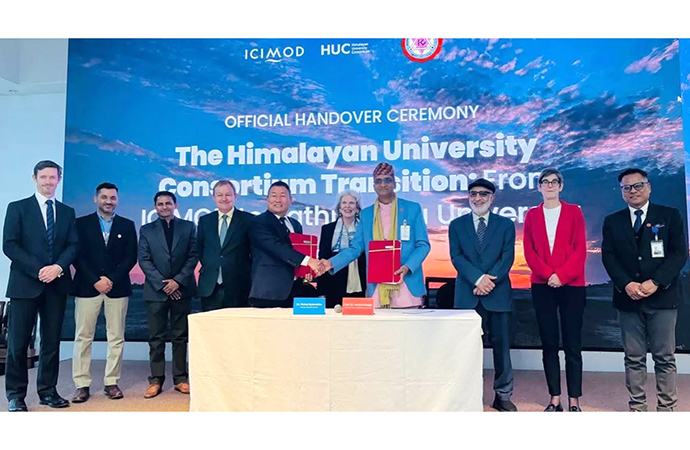



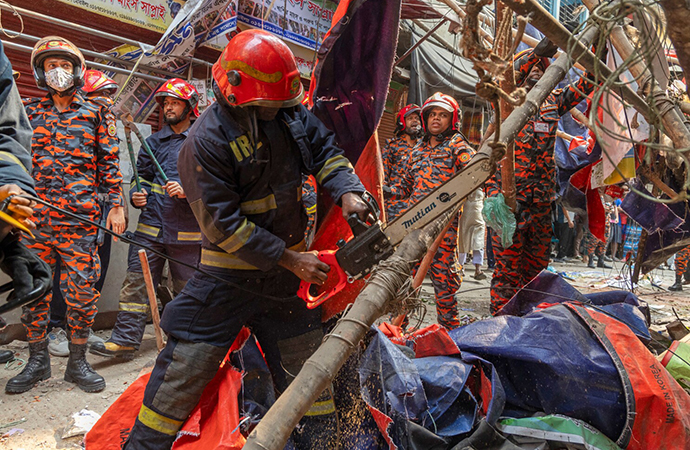
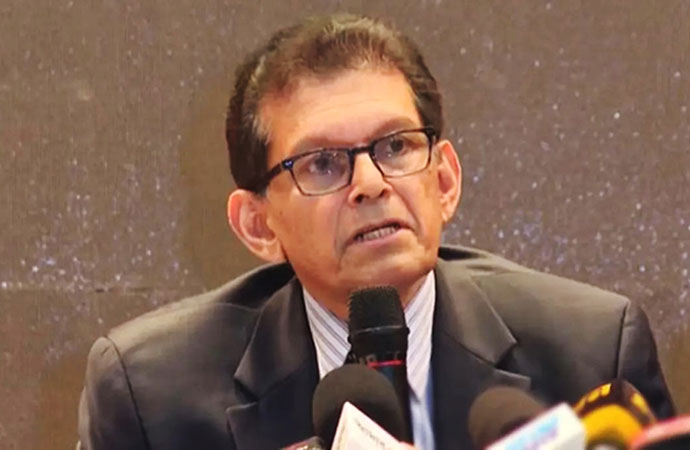
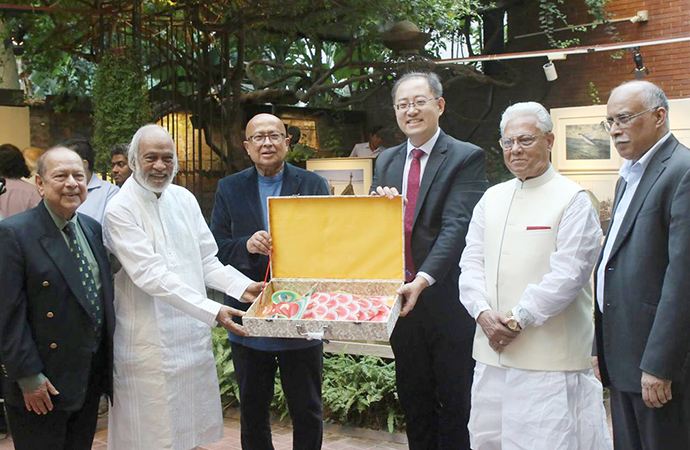


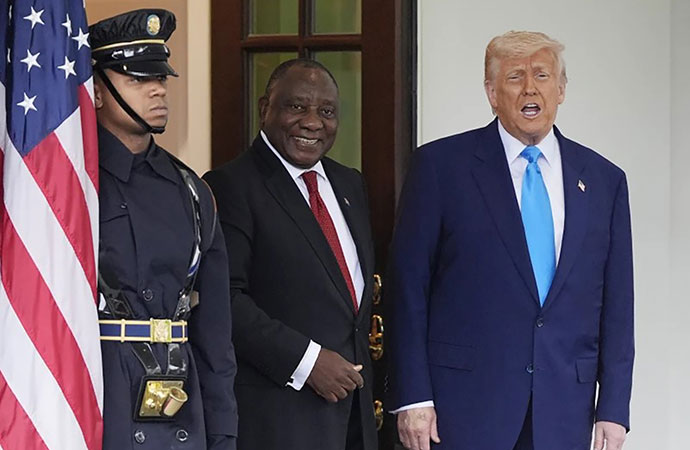


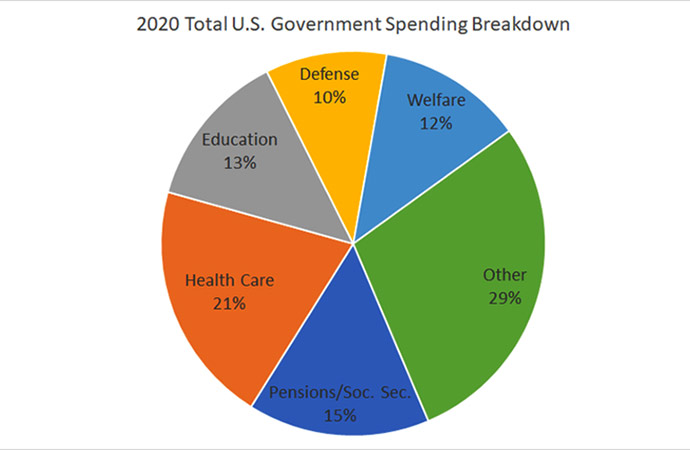
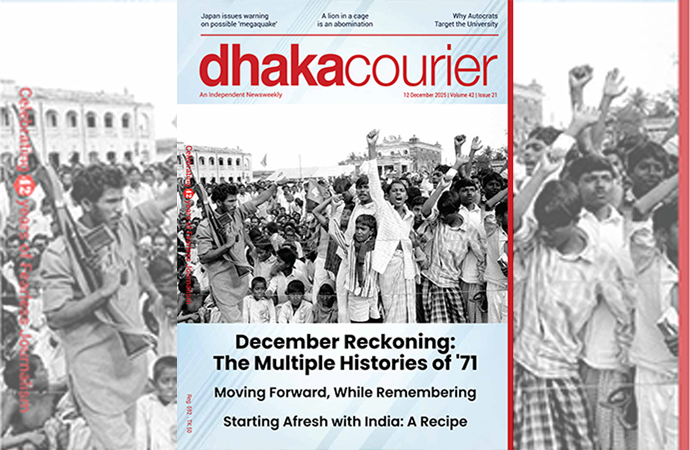
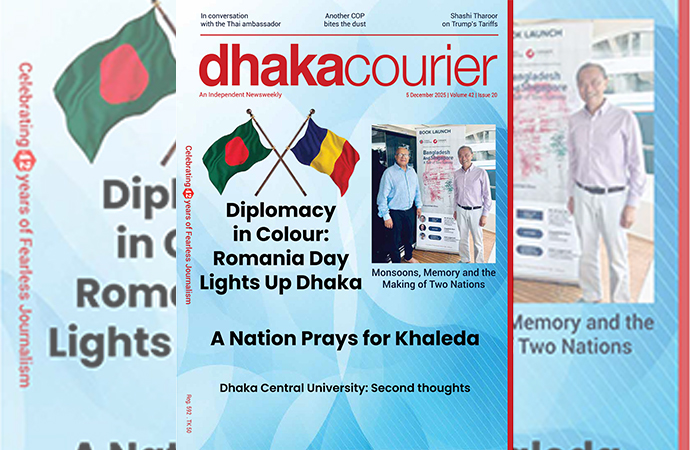
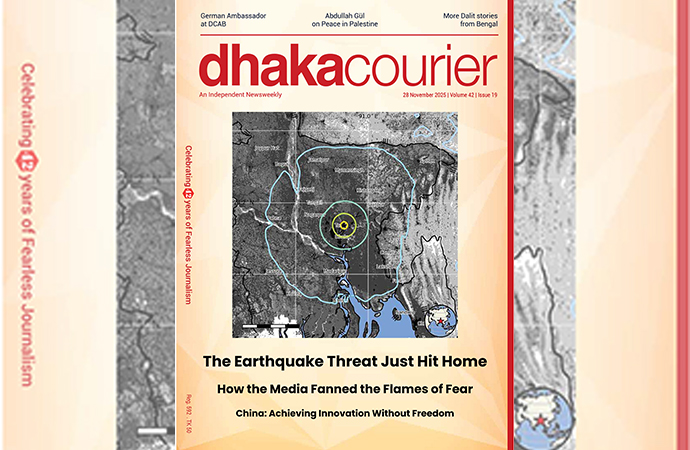
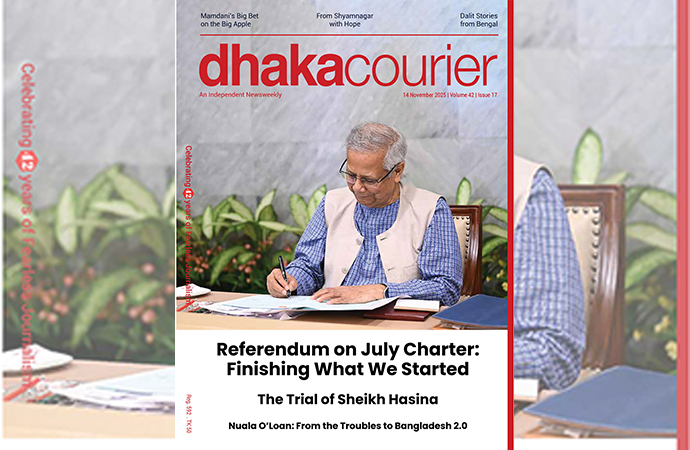
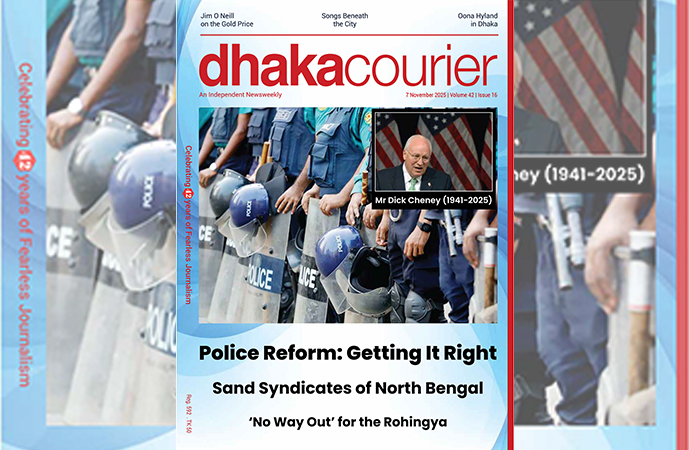
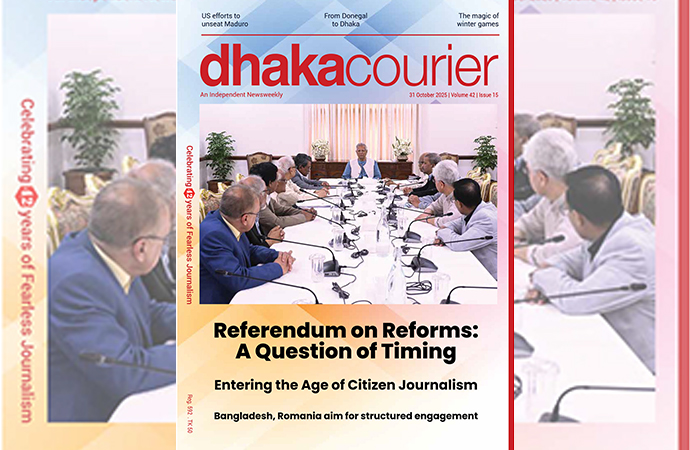
Leave a Comment
Recent Posts
Right On Schedule
The most eagerly anticipated, and frankly hyped up, announcement of an ...
Fighting raged along the borde ...
Fighting raged along the border of Cambodia and Thailand, with explosi ...
ICIMOD drives regional cooperation to inspire new mo ..
The Cage of Captivity and the Cry for Freedom: A Cru ..
Why Japan issued an advisory for a possible megaquak ..
The Autocrats’ War on Universities